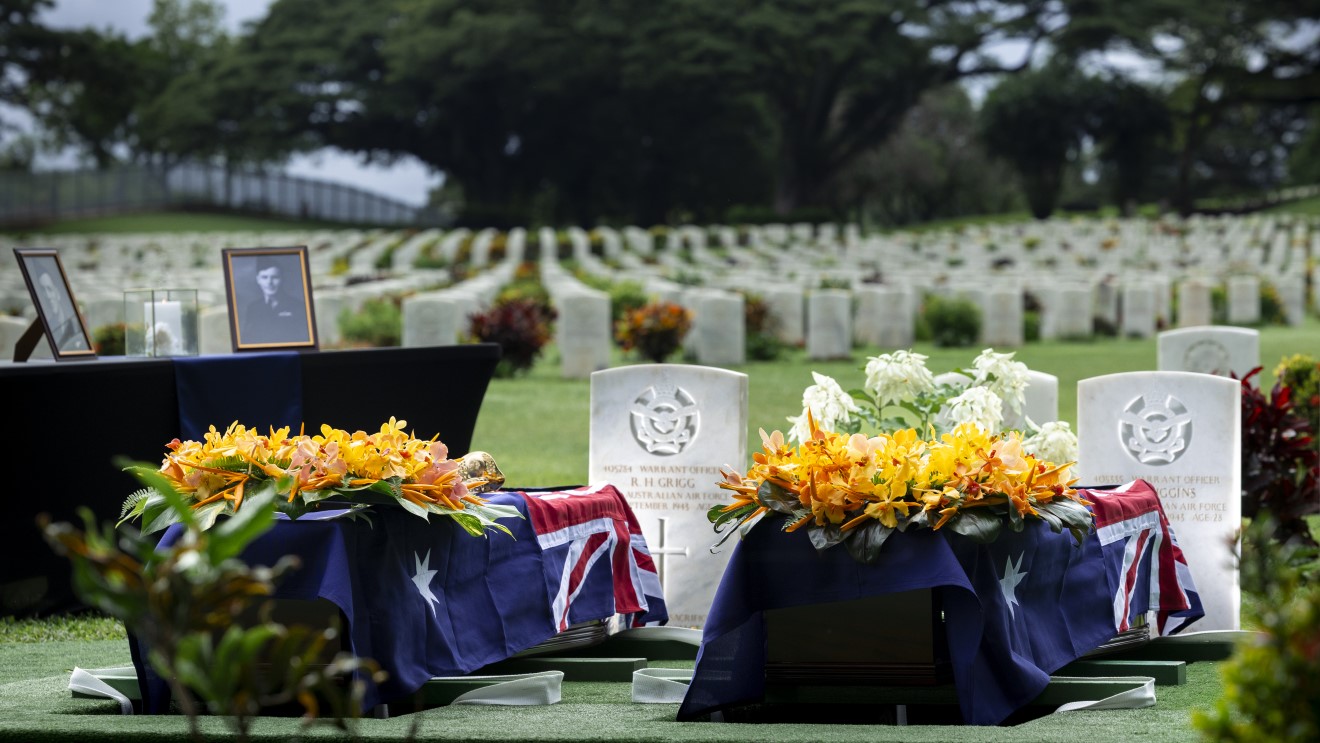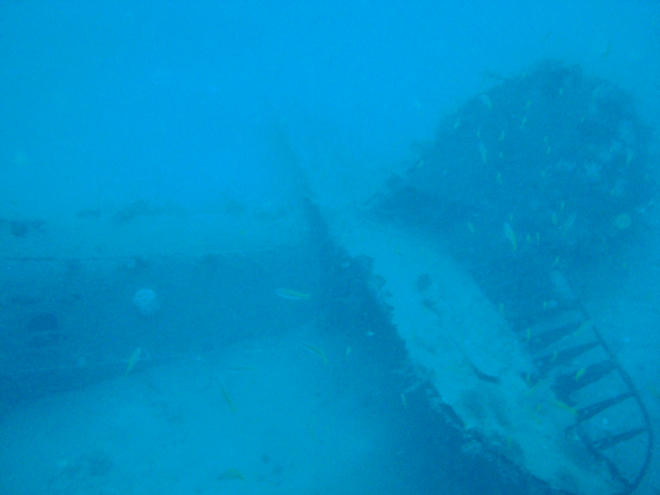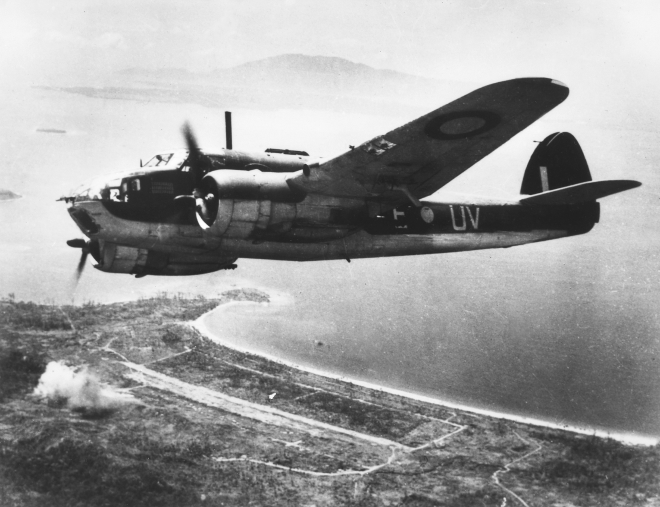Remembering the crew of Beaufort bomber A9-186

The journey to find, identify and commit the remains of Australian Second World War aviators has ended with a commemorative service at Bomana War cemetery.
On 19 May, the RAAF conducted a committal service at Bomana War Cemetery in Port Moresby for the remains of 2 aviators killed during a mission off what is now Papua New Guinea on 5 September 1943.
The aviators – Warrant Officers Russell Henry Grigg (navigator) and Clement Batstone Wig[1]gins (pilot) – were among a crew of 4 aboard a Beaufort light bomber (A9-186) that was shot down during an attack on Japanese forces at Gasmata on the island of New Britain.
The wreckage was found in 43 metres of water, 1.4 kilometres southwest of Gasmata in late 2020. Bone fragments from Warrant Officers Grigg and Wiggins were positively identified following investigations undertaken in February 2022. The mission involved the use of specialist divers who worked on an aircraft extensively damaged by fire and covered in layers of sediment and marine growth.

The service was attended by Australian and Papua New Guinean dignitaries, including DVA Secretary Alison Frame, as well as relatives of the aviators.
After the service, Roger Grigg, the grandson of Warrant Officer Grigg, said that it meant a lot to his family to finally be able to say goodbye. ‘It is fitting to bury my grandfather in this peaceful location, at rest with so many other Australians who never came home,’ he said. ‘My family is grateful to the Air Force for giving us the opportunity to say goodbye.’
Sadly, the remains of the 2 other crew members on board, Flight Sergeants Albert Beckett and Gordon Lewis Hamilton, were not found. However, a memorial service for all 4 crew took place in April 2024 at RAAF Base Amberley in Queensland.
The identification and recovery missions of Beaufort A9-186 were sponsored by businessman and philanthropist Andrew Forrest AO. The initial discovery of A9-186 was made by an Ocean Ecology Pty Ltd dive team working for Dr Forrest as part of a search for his uncle, who was lost during a mission to Gasmata while piloting another Beaufort.
The RAAF’s Historical Unrecovered War Casualties (HUWC) team worked with the Minderoo team and Papua New Guinea’s National Museum and Art Gallery on the 2022 mission. Osseous material was returned to Australia for further analysis by RAAF anthropologists.
One of the officers involved in part of the initial investigation was Flight Lieutenant Sarah Croker, a reservist employed to provide skills in forensic anthropology to the team. Her job was to desalinate and dry the bone material, then confirm that it was human.

‘I hadn’t dealt with remains found underwater before, but I was pleased that I was able to tell right away that they were human. I also thought it may be likely the remains may have been from 2 people, Lieutenant Croker said.
Flight Lieutenant Croker considers this work to be very important: ‘It’s extremely satisfying to be able to put people to rest properly, and allow families to get closure. I attended the memorial service [at RAAF Amberley]. It was the first time I met relatives of those whose remains I’ve worked on. It felt profound to make that connection.’
To confirm which remains belonged to which aviator, the HUWC asked the NSW Forensic and Analytical Science Service (FASS) to extract DNA material because it is one of the few lab[1]oratories in Australia capable of extracting and analysing DNA. They also provided DNA pro[1]files from relatives of the 4 airmen to see if there was a match.
‘Any time you’re testing historic remains it’s challenging,’ says Clint Cochrane, FASS’s Operations Director, Criminalistics. ‘Water is very effective at degrading DNA … Going into the process, we didn’t think we’d get results. As it happens though, we got quite a bit of high-quality DNA.’
In addition to routine DNA testing, the FASS team do 2 more specialised forms of DNA testing: Mitochondrial (DNA that passes down the maternal line), and Y-STR (which passes down the paternal line). It is not typically possible to do routine testing on highly degraded DNA.
While the bulk of FASS’s work relates to criminal and coronial cases, it has been working with the ADF for around 10 years on identifying the remains of service personnel. ‘We appreciated being a part of this work,’ says Clint. ‘It’s not often that we have the opportunity to resolve cases such as these, and in so doing provide sol[1]ace and closure to the relatives.’
Warrant Officers Grigg and Wiggins joined more than 3,300 Australian and 40 New Guinean defence personnel who have been laid to rest in the Bomana War Cemetery. The wreckage of A9-186 will remain on the sea floor as a war grave.
Lest we forget.
